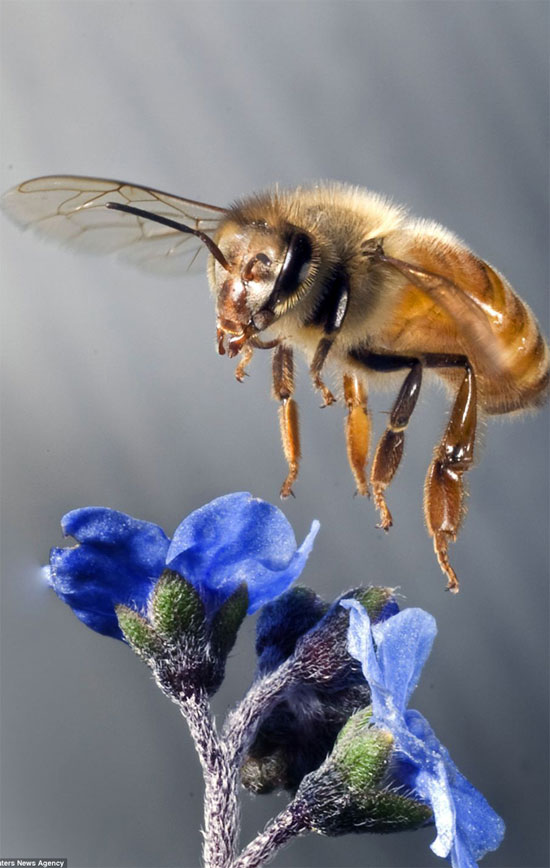A bunch of beautiful images of insects
Photographer Linden Gledhill uses lasers and macro lenses to take a close-up look of the beauty of insects like wasps, ladybirds . when they are flying in his garden.

Linden Gledhill photographer captured dozens of great photos of insects in his home gardens in Pennsylvania. In the picture is a close-up of the colorful ladybug spreading its wings between grass and flowers.

The name of the beetle , also known as Coleoptera, is derived from the Greek word. It means the cover and the wings. They stand out because there are two wings, in which the wings on the top are very hard to protect, covering the delicate wings below.

The honey bees often fly away to find mates going to mate. After the mission is completed, male honey bee partners often die. In cold climates, they never fly when temperatures drop below 10 degrees Celsius and honey bees make "winter bee colonies" in the central area.

Beautiful images of moths , also known as caterpillars. Some theories suggest that the name of this insect is so called because it usually works at the time of the moon light. Gledhill said he had a hobby of taking photos since he was young and bought a camera from the age of 12.

This is an extremely vivid image of wasps . This insect is divided into two categories: solitary and herd. The number of individuals who live in the herd up to thousands of heads and head of governance is queen bee. Male bees only do mating and other workers are not fertile.

Moths are some of the insects that Gledhill likes the most. He explained that they always show extremely graceful shapes during the flight.

In Greek, the name of the fly means "two" and "wings". The antenna lies on the top of its head, which reduces the drag when flying.

A June beetle has a reddish brown shirt and a nocturnal species. They are quite small in size ranging from 12-35mm.
- Bunch of poisonous insects, rare and rare
- Set of brilliant photos showing off
- Gorgeous insects ...
- Beautiful photo: Squirrel eating chestnuts while hanging upside down
- Beautiful photo: Beaks catch flies on the lake
- Beautiful photo: Lost in the world of insects
- Beautiful images are only available on Mars
- Beautiful photo: Insects glitter in the early dew
- Beautiful photos: Insects in the rain garden
- Close up of the world of beautiful insects hard to imagine
- A bunch of beautiful animal photos of dawn and sunset
- Beautiful photo: Flies even lent themselves to the gecko
 The 11 most unique public toilets in the world
The 11 most unique public toilets in the world Explore the ghost town in Namibia
Explore the ghost town in Namibia Rare historical moments are 'colored', giving us a clearer view of the past
Rare historical moments are 'colored', giving us a clearer view of the past The world famous ghost ship
The world famous ghost ship